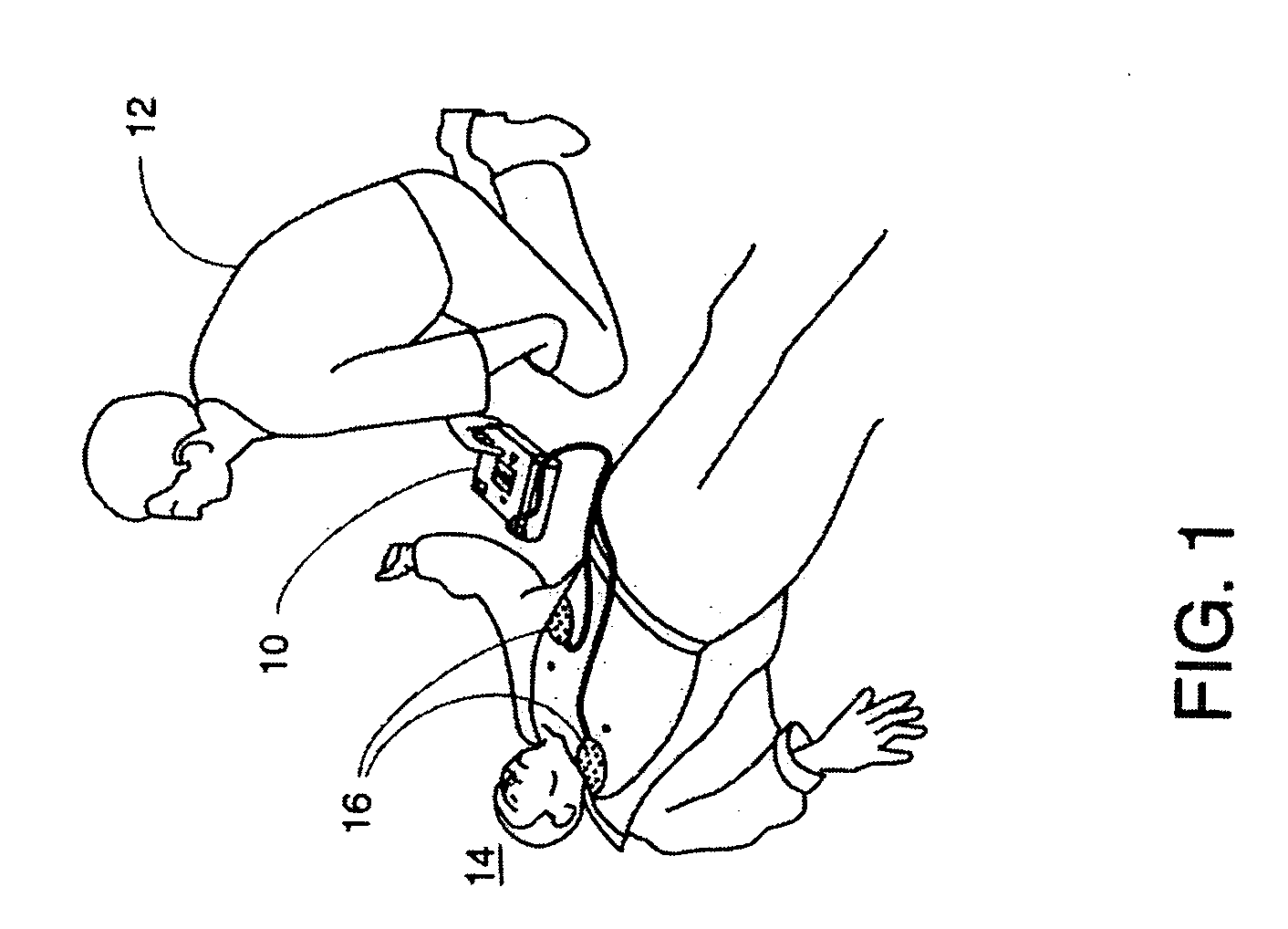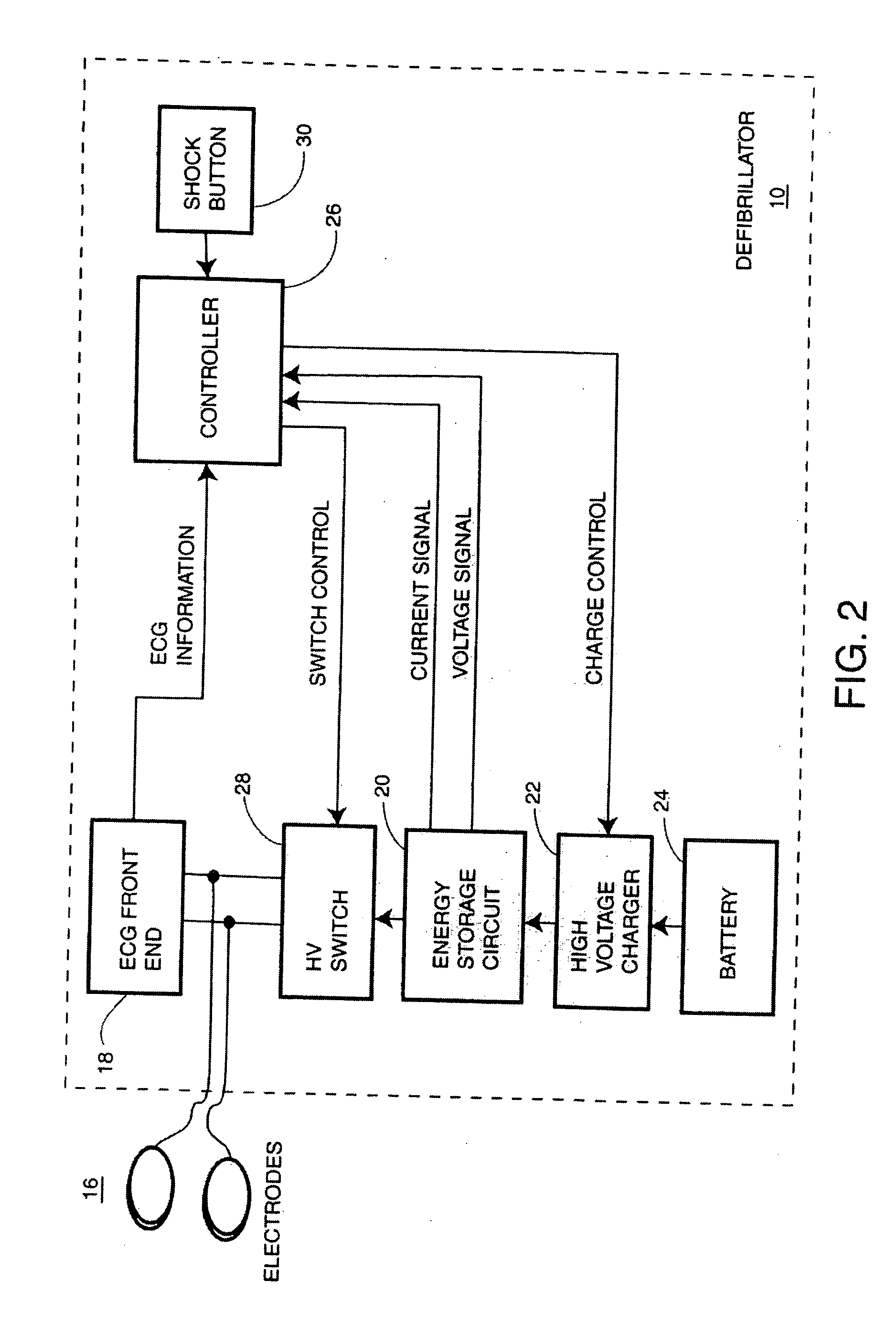Damped biphasic energy delivery circuit for a defibrillator
a biphasic energy and defibrillator technology, applied in the field of electrotherapy circuits, can solve the problems of reducing the effect of defibrillator pulse, ineffective heart pumping, and severe reduction of heart pumping, and affecting the defibrillator puls
- Summary
- Abstract
- Description
- Claims
- Application Information
AI Technical Summary
Benefits of technology
Problems solved by technology
Method used
Image
Examples
Embodiment Construction
[0029]FIG. 2 is a simplified block diagram of a defibrillator 10 according to the present invention. The pair of electrodes 16 for coupling to the patient 14 are connected to an ECG front end 18 and further connected to an HV switch 28. The ECG front end 18 provides for detection, filtering, and digitizing of the ECG signal from the patient 14. The ECG signal is in turn provided to a controller 26 which runs a shock advisory algorithm that is capable of detecting ventricular fibrillation (VF) or other shockable rhythm that is susceptible to treatment by electrotherapy.
[0030] A shock button 30, typically part of a user interface of the defibrillator 10 allows the user to initiate the delivery of a defibrillation pulse through the pair of electrodes 16 after the controller 26 has detected VF or other shockable rhythm. A battery 24 provides power for the defibrillator 10 in general and in particular for a high voltage charger 22 which charges the capacitors in an energy storage circui...
PUM
 Login to View More
Login to View More Abstract
Description
Claims
Application Information
 Login to View More
Login to View More - R&D
- Intellectual Property
- Life Sciences
- Materials
- Tech Scout
- Unparalleled Data Quality
- Higher Quality Content
- 60% Fewer Hallucinations
Browse by: Latest US Patents, China's latest patents, Technical Efficacy Thesaurus, Application Domain, Technology Topic, Popular Technical Reports.
© 2025 PatSnap. All rights reserved.Legal|Privacy policy|Modern Slavery Act Transparency Statement|Sitemap|About US| Contact US: help@patsnap.com



